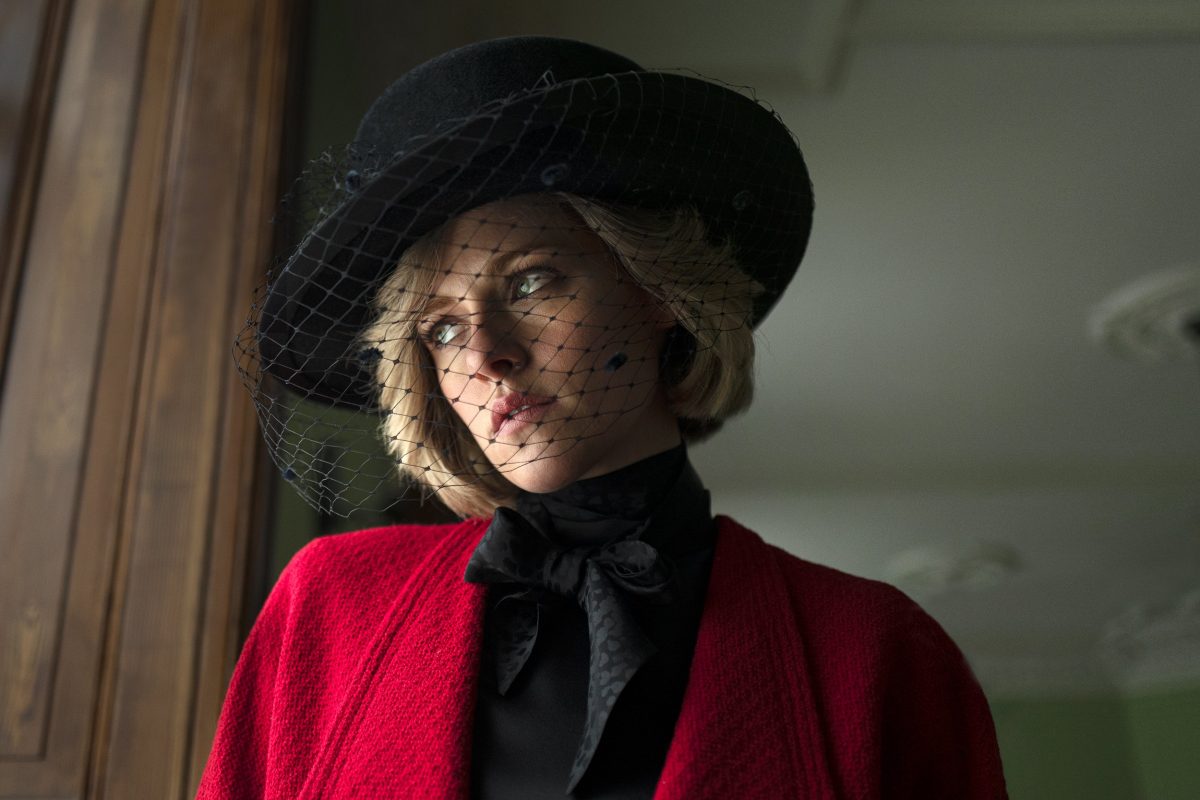Photo Courtesy of NBC News
“Spencer,” released on Friday, Nov. 5, and spearheaded by American actress Kristen Stewart and directed by Pablo Larraín shows a completely new approach to the story of the People’s Princess.
The movie takes place all within a three-day period during the royal family’s Christmas celebrations in 1991, right before Princess Diana and Prince Charles’ divorce. The movie opens up with the delivery of ingredients for a dinner feast accompanied by eerie music. The entire soundtrack was composed by Jonny Greenwood, lead guitarist for English rock band Radiohead, who filled it to the brim with dissonant strings that sound like they’re about to snap, which only aids Larraín in creating a general sense of unease, anxiety and physical tension for audiences in the best way possible.
Though the late Princess Diana only passed 24 years ago, she has already been portrayed a countless number of times in all forms of media. Her death only aided her longevity as a public figure, and in many ways, she has become more of a symbol than a person. Despite the many iterations of the “important” events of her life, this film about seemingly no events at all is nothing short of a psychological thriller dressed up as another historical biopic.
This “dressing up” of sorts could, of course, never have been successful without the literal costuming. Not only are the outfits that Stewart wears in the film, including an exact replica of Princess Diana’s wedding dress from 1981, nearly identical to the photos from these exact days, they serve an important narrative role as well. The dresses and pearls, beautiful and soft as they are, become yet another prison for Diana and the tags on each bag designating exactly when and how to wear each outfit become the shackles.
The film’s casting was met with mountains of doubt by audiences and critics alike, with many questioning Stewart’s ability to tackle the simultaneous fragility and strength of Princess Diana in such a tumultuous time of her life. Stewart is perhaps still most well-known (over a decade later) from her leading role in “The Twilight Saga” portraying Bella Swan. This double standard for Stewart and “Twilight” costar Robert Pattinson could perhaps be accredited to the fact that Stewart is not one to disappear into her roles. Pattinson transforms himself mentally and physically in each role, erasing his entire psyche to the point just before madness, continuously providing a high-tension chaos factor in his performances that demands audiences’ attention through its addicting unpredictability. Stewart, on the other hand, seems to always take a more guarded approach, never being able to fully be rid of her own mannerisms, enticing viewers instead with the task of unpacking her emotions themselves. In this way, there is no role better fit for her than Princess Diana herself.
As both the titular character and the role with by far the most amount of screen time, Stewart’s performance was crucial not just for reviewers ready to rip her apart all over again, but also for the overall impact of the film itself. Many predicted that her performance would be solely responsible for the film’s downfall, but in the end, it is its greatest triumph. Stewart perfects not only the soft-spoken posh English accent but also the inherent melancholic nature of Princess Diana’s inflection. She mumbles half her sentences and then seems to gain confidence halfway through, interjecting as though she’s constantly interrupting herself. She tips her chin down and speaks with her eyes looking up through her fringe. She walks and sits as though she’s only exactly as proper as what is required of her. Stewart’s absolute mastery of the smallest yet most quintessential details that distinguish Diana as an individual are what allow for the authenticity of her larger-than-life and emotional scenes to be successful, and thus, ultimately, the film itself as well.








